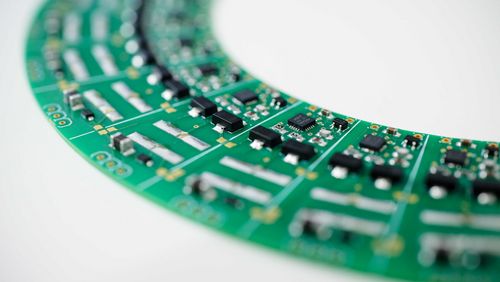
Artificial muscle for a common complaint
Last year, the team at the Center for Artificial Muscles in Neuchâtel began focusing on their urinary tract project. Their idea is to develop an artificial muscle that can close the urethra—offering relief to patients suffering from urinary incontinence. The initial developments are highly promising.
The human body contains some six hundred and fifty muscles and, depending on age, gender and fitness, the sum total makes up between a quarter to more than half our body mass. Unsurprisingly, there are also many different kinds of muscular diseases and injuries, and it’s unfortunately not always possible to heal a damaged muscle.
At the Center for Artificial Muscles (CAM) at the Neuchâtel campus of the École polytechnique fédérale de Lausanne (EPFL), a team led by director Yves Perriard and managing director Yoan Civet are seeking alternative treatments for muscle-related medical conditions—and are developing novel, extremely elastic materials equipped with electrodes that use battery power to expand and contract, just like real muscles. The researchers are working on systems for using their artificial muscles to increase the heart’s pumping capacity in patients with cardiac insufficiency and to help people with facial paralysis.
A third idea is the development of an artificial sphincter for the urethra. More than four hundred million people worldwide suffer from weak bladders, or incontinence, with women affected roughly two and a half times more than men. Depending on cause and severity, treatments include relaxation techniques, muscle training, absorbent products and surgical procedures.
Reducing side effects
In severe cases, patients are fitted with an artificial urinary sphincter—a circular cuff placed around the urethra that is controlled manually to empty the bladder. These devices, which are primarily implanted in men, generally work well, but they have several undesirable side effects—and in about a quarter of all cases they stop working, making a repeat procedure necessary. Yves Perriard and Yoan Civet are convinced that their highly elastic, electric-powered materials can be used to develop better alternatives.
As a first step, the researchers conducted various tests on pig urethras to better understand the mechanical properties of the organ and searched the literature for information about the particularities of the human urethra. “Using this data, we looked into different materials that could potentially imitate the urethra and be used for testing our artificial sphincter,” Yoan Civet says. “Because the urethra is an extremely delicate tissue,” Yves Perriard adds. “If the artificial muscle applies too much pressure on it, its cells die quickly.”
Imitating complex human tissue
The researchers found two materials made of silicone or hydrogel that demonstrates similar mechanical behaviours as human urethral tissue. “We’ll continue to analyse and adapt these two materials,” Civet says. The work is challenging because the human urethra doesn’t react in a linear fashion to pressure; rather, it suddenly stiffens when a certain amount of pressure is applied. “It’s possible that we’ll need to add fibres to our materials to imitate this stiffening action,” Civet explains.
The team are also pursuing another line of research in which they’ll fabricate a sphincter made of their highly elastic materials, so-called dielectric elastomer actuators. Here, too, the researchers can report the first positive results: they created “artificial muscle” tubes with a length of four centimetres whose diameter increases via the electrodes. “The results are promising,” Yves Perriard says.
Despite this progress, the researchers are also working on a second approach—because one of their main goals is ensuring that women benefit from their artificial sphincter. The urethra of women is so much shorter than that of men that it’s not certain whether the dielectric elastomer actuators would have enough contact surface to generate the necessary pressure. That’s why the team are also working on fitting artificial muscles on a metal ring that can be placed around the urethra. The movement of the actuators would open or close the ring, much like the aperture in a camera.
It will be interesting to see how the project develops—and what new ideas the Neuchâtel researchers come up with next.








